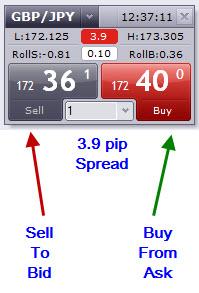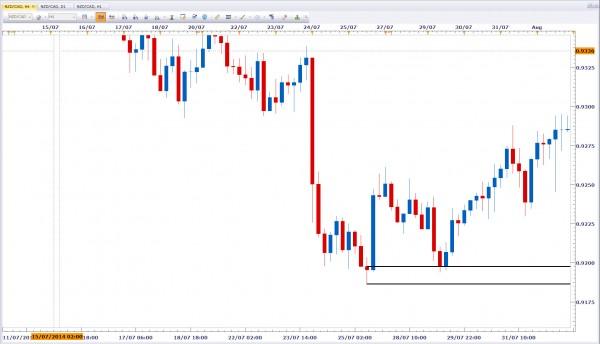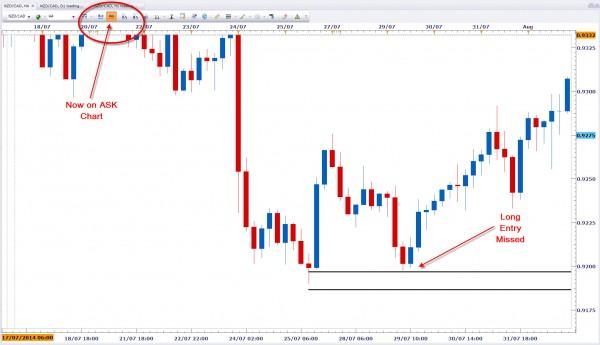![]()
The world of Trading and Investing is full to the brim with articles, websites, books and seminars on how to make money in the markets using different strategies, technical indicators and techniques. While I feel that on one hand this is a good thing, as there should be plenty of information out there to help people who want to attempt to make something for themselves in their trading, we also have to be aware that when there is so much information available to us, it can be easy to overlook the most fundamental things that we should be paying attention to as well. Any of you who have been reading my articles over the last 5 years will know that I come from the school of simple when it comes to trading the worldwide financial markets. I made sure to be formally educated and mentored over the 10 years that I have been involved in the markets and while I have embraced many different ways of trading, I took each and every step towards finding a methodology and approach that was right for me. In the end I discovered two key things: 1 – Keep things as simple as possible and 2 – Keep things as logical as possible.
One of the things I love so much about what we do here at Online Trading Academy, is the way that we teach a simple, yet incredibly powerful rules-based way to trade which is not only easy to follow and very objective in its analysis but also follows what the largest Banks and Institutions are doing in the market by recognizing the levels of Supply and Demand that they create with their large orders and in turn, allows our students to buy and sell in the same areas. It is a system that I have followed for a number of years and to me personally, I feel that it could not be anymore logical or systematic in its approach to the markets. However, once we have a trade and plan and system laid down, we then need to ensure that we are paying attention to other factors, which could affect the outcomes of our trades too. It can be easy to lose focus on the little things from time to time and especially in the realm of FX trading, the little things need attention more than in most other markets.
This brings me nicely to the subject of this article, the spread. Now most active currency traders will not need me to explain what the spread is but if you are brand new to the FX markets then you should know that after risk management and strategy has be addressed, the spread is probably the thing which will have an impact on your trading results the most. Take a look at the diagram below:
In this example we have a screenshot of the GBPJPY live quote and spread giving a Bid of 172.361 and an Ask of 172.400, creating a 3.9 pip spread. This is basically the cost of the trade which you will have to pay if you decide to take either a long of short position on this currency pair. Much like anything else in life, you must pay the asking price, known as the Ask if you want to buy and if you want to sell, you will need to sell to the price which other are willing pay, also known as the Bid. You may already be well aware of this if you are an active FX trader, as this is effectively the only commission you will ever pay in currency trading. However, as I mention earlier in this article, there are other ways that the spread can impact your trading too. This is where a little bit of logic never goes amiss in the markets.
Let us start firstly buy taking a look at an ideal trading opportunity as defined by the Online Trading Academy patented Core Strategy. Below we have an institutional level of Demand, offering us a great low-risk and high potential reward opportunity to buy this FX paring:
In the above example we see a strong move away from our highlighted Demand zone on the NZDCAD, just below 0.09200 for a long entry. The level suggests to us a strong imbalance between the buyers and sellers, thus indicating that we should buy when prices reach the upper line of our zone, with a stop loss order just below the lower line of the zone. After placing the orders, we leave the rest to the market forces. Let’s see how it worked out:
As we can see the trade was a decent and successful one, with any trader being happy with that result. However, things are not always what they seem. This chart is only showing us the Bid prices, meaning that we will get a very different picture if we show a chart of the ask prices instead. Remember that if you are a buyer, you will only be triggered at the Ask price, not the Bid. Here is how it looks on the Ask chart:
In this chart shot, we can see that prices never actually reached our entry line at the Demand zone on the ask chart. The entry lines around the zone have not been moved either, meaning that they are based on the Bid chart only. Here was a perfectly good setup which was not executed because the entry prices were based on the Bid chart rather than the Ask chart, a small yet very impacting dynamic and something we should all be aware of when trading FX which uses spread in the pricing model.
In closing, I would say that this does not happen very often in trading our strategy because we give our supply and demand zones plenty of room to enter our trades but we should be aware that this can happen now and then. We can either use the Bid charts for selling trades and Ask charts for buys, or just factor in a few extra pips on the entries and exits to build this into the potential outcomes of the trade. Whatever way you decide to deal with the spread on your entry and exit, I do hope you found this topic a useful one and that it benefits your trading in the future.
Note: All information on this page is subject to change. The use of this website constitutes acceptance of our user agreement. Please read our privacy policy and legal disclaimer. Opinions expressed at FXstreet.com are those of the individual authors and do not necessarily represent the opinion of FXstreet.com or its management. Risk Disclosure: Trading foreign exchange on margin carries a high level of risk, and may not be suitable for all investors. The high degree of leverage can work against you as well as for you. Before deciding to invest in foreign exchange you should carefully consider your investment objectives, level of experience, and risk appetite. The possibility exists that you could sustain a loss of some or all of your initial investment and therefore you should not invest money that you cannot afford to lose. You should be aware of all the risks associated with foreign exchange trading, and seek advice from an independent financial advisor if you have any doubts.
Editors’ Picks
EUR/USD fluctuates near 1.0700 after US data

EUR/USD stays in a consolidation phase at around 1.0700 in the American session on Wednesday. The data from the US showed a strong increase in Durable Goods Orders, supporting the USD and making it difficult for the pair to gain traction.
USD/JPY refreshes 34-year high, attacks 155.00 as intervention risks loom

USD/JPY is renewing a multi-decade high, closing in on 155.00. Traders turn cautious on heightened risks of Japan's FX intervention. Broad US Dollar rebound aids the upside in the major. US Durable Goods data are next on tap.
Gold keeps consolidating ahead of US first-tier figures

Gold finds it difficult to stage a rebound midweek following Monday's sharp decline but manages to hold above $2,300. The benchmark 10-year US Treasury bond yield stays in the green above 4.6% after US data, not allowing the pair to turn north.
Worldcoin looks set for comeback despite Nvidia’s 22% crash Premium

Worldcoin price is in a better position than last week's and shows signs of a potential comeback. This development occurs amid the sharp decline in the valuation of the popular GPU manufacturer Nvidia.
Three fundamentals for the week: US GDP, BoJ and the Fed's favorite inflation gauge stand out Premium

While it is hard to predict when geopolitical news erupts, the level of tension is lower – allowing for key data to have its say. This week's US figures are set to shape the Federal Reserve's decision next week – and the Bank of Japan may struggle to halt the Yen's deterioration.
RECOMMENDED LESSONS
Making money in forex is easy if you know how the bankers trade!
Discover how to make money in forex is easy if you know how the bankers trade!
5 Forex News Events You Need To Know
In the fast moving world of currency markets, it is extremely important for new traders to know the list of important forex news...
Top 10 Chart Patterns Every Trader Should Know
Chart patterns are one of the most effective trading tools for a trader. They are pure price-action, and form on the basis of underlying buying and...
7 Ways to Avoid Forex Scams
The forex industry is recently seeing more and more scams. Here are 7 ways to avoid losing your money in such scams: Forex scams are becoming frequent. Michael Greenberg reports on luxurious expenses, including a submarine bought from the money taken from forex traders. Here’s another report of a forex fraud. So, how can we avoid falling in such forex scams?
What Are the 10 Fatal Mistakes Traders Make
Trading is exciting. Trading is hard. Trading is extremely hard. Some say that it takes more than 10,000 hours to master. Others believe that trading is the way to quick riches. They might be both wrong. What is important to know that no matter how experienced you are, mistakes will be part of the trading process.




